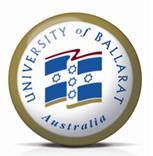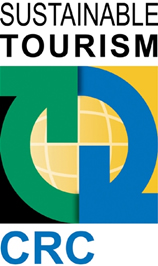Technical and further education or simply TAFE is the common name in English-speaking countries in Oceania for vocational education, as a subset of tertiary education. TAFE institutions provide a wide range of predominantly vocational courses.
The University of Technology Sydney (UTS) is a public research university located in Sydney, New South Wales, Australia. The university was founded in its current form in 1988, though its origins as a technical institution can be traced back to the 1870s. UTS is a founding member of the Australian Technology Network (ATN), and is a member of Universities Australia (UA) and the Worldwide Universities Network (WUN).

Charles Sturt University is an Australian multi-campus public university located in New South Wales, Australian Capital Territory and Victoria. Established in 1989, it was named in honour of Captain Charles Napier Sturt, a British explorer who made expeditions into regional New South Wales and South Australia.
Ingrid Moses, an Australian academic and former university administrator, is an emeritus professor at the University of Canberra. After a long academic career in Australia, Moses served as the Chancellor of the University of Canberra between 2006 and 2011.
The Apple University Consortium is a partnership between Apple Australia and a number of Australian universities. Every two years it holds the AUC Academic & Developers Conference in an Australian city. It also sponsors subsidised seats to the WWDC conference in San Francisco each year for university staff and students.
A Bachelor of Business is a three to four year undergraduate degree in the field of business offered by traditional and newer universities from the post-Dawkins era in Australia, New Zealand and Ireland. It is similar in format and structure to a Bachelor of Commerce (BCom).

The University of Ballarat, Australia was a dual-sector university with multiple campuses in Victoria, Australia, including its main Ballarat campus, Melbourne, Sydney, and Adelaide that were authorized by the university to provide diploma, undergraduate and postgraduate programs. The university offered traditional programs, including business, information technology, building and construction, engineering, mining, education, social sciences, nursing, hospitality, and art.

The Higher Education Support Act 2003 (Cth) (HESA) is an Act of the Parliament of the Commonwealth of Australia which governs funding for universities in Australia. The Act determines categories of providers eligible for public funding, establishes the basis for providing public funding, codifies the existing aims of universities, and introduces measures to strengthen Australia’s knowledge base.
The Systemic Infrastructure Initiative was announced by the Government of Australia in January 2001 as part of Backing Australia's Ability – An Innovation Action Plan for the Future.

Tertiary education in Australia is formal education beyond high school in Australia, consisting of both government and private institutions and divided into two sectors; Higher Education and Vocational Education and Training (VET) provided by government-owned TAFEs & private Registered Training Organisations (RTO). Australian Qualifications Framework (AQF), the Australian national education policy, classifies tertiary qualification into 10 levels: level 1 to 4 undergraduate certificates; level 5 & 6 undergraduate diploma and advanced diploma; level 6 associate degree; level 7 bachelor degree, level 8 honors bachelor's degree & graduate certificates and graduate diplomas; level 9 for master's degree; level 10 PhD and post doctoral studies. Most universities are government owned and mostly self-regulated. For other institutes there are two national regulators for tertiary education for registration, recognition and quality assurance of both the "provider institutes" as well as the "individual courses" provided by the providers. Tertiary Education Quality and Standards Agency (TEQSA) regulates institutes which provide education from level 5 or above. Australian Skills Quality Authority (ASQA) regulates institutes which provide education from level 1 to level 6.

The Universities Admissions Centre is an organisation that processes applications for admission to tertiary education courses, mainly at institutions in New South Wales and the Australian Capital Territory. A not-for-profit company incorporated in July 1995, it has offices located at Sydney Olympic Park.
The Australian Mathematical Sciences Institute (AMSI) was established in 2002 for collaboration in the mathematical sciences to strengthen mathematics and statistics, especially in universities.
The NSW Tertiary Student Rugby League is an affiliated body of the New South Wales Rugby League, established to promote the development of Rugby League within Universities, TAFE and other Tertiary Institutes within the state of NSW.

Education in Victoria, Australia is supervised by the Department of Education and Training (DET), which is part of the State Government and whose role is to "provide policy and planning advice for the delivery of education". It acts as advisor to two state ministers, that for Education and for Children and Early Childhood Development.

Sustainable Tourism Cooperative Research Centre (STCRC),was an Australian Cooperative Research Centre, headquartered in Gold Coast, Queensland, established by the Australian Government's Cooperative Research Centers Program to establish a competitive and dynamic sustainable tourism industry in Australia. It ceased to operate on 30 June 2010.
Excellence in Research for Australia (ERA) is Australia’s national research evaluation framework, developed and administered by the Australian Research Council (ARC). The first full round of ERA occurred in 2010, and subsequent rounds followed in 2012, 2015 and 2018. A round was scheduled for 2023, but in September 2022 the ARC announced that this would be postponed as they were transitioning the ERA process to a more robust and data driven model.
Clifford Douglas Blake AO is an Australian agriculturalist and educationalist who became first Vice-Chancellor of Charles Sturt University, from 1990 through to 2001 and then after his retirement from CSU in July 2001, he took up an interim Vice-Chancellor position at Adelaide University from August 2001.